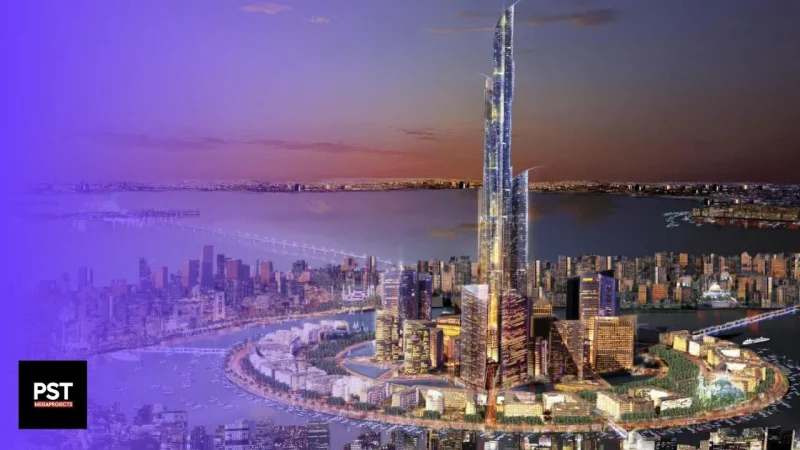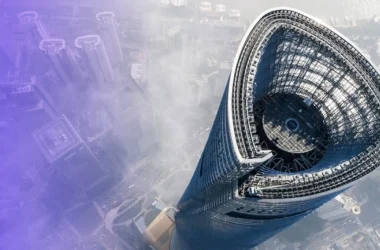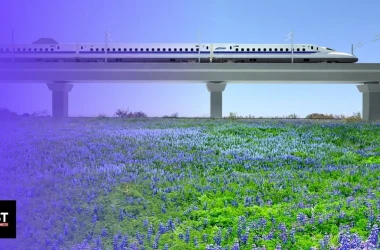Who would’ve thought we would reach the point of building entire massive cities from scratch? With several city megaprojects currently under development all over the world, just imagine how the current landscape will be completely transformed a hundred years from now if we keep going at this rate. From a gigantic industrial undertaking worth $140 billion in Saudi Arabia and a thousand-meter-tall tower in Kuwait’s $130 billion Silk City, to a 1,000 km2 space city in the UAE and a green city in Bhutan, these projects are as diverse as they’re massive.
Abu Dhabi Space Eco City
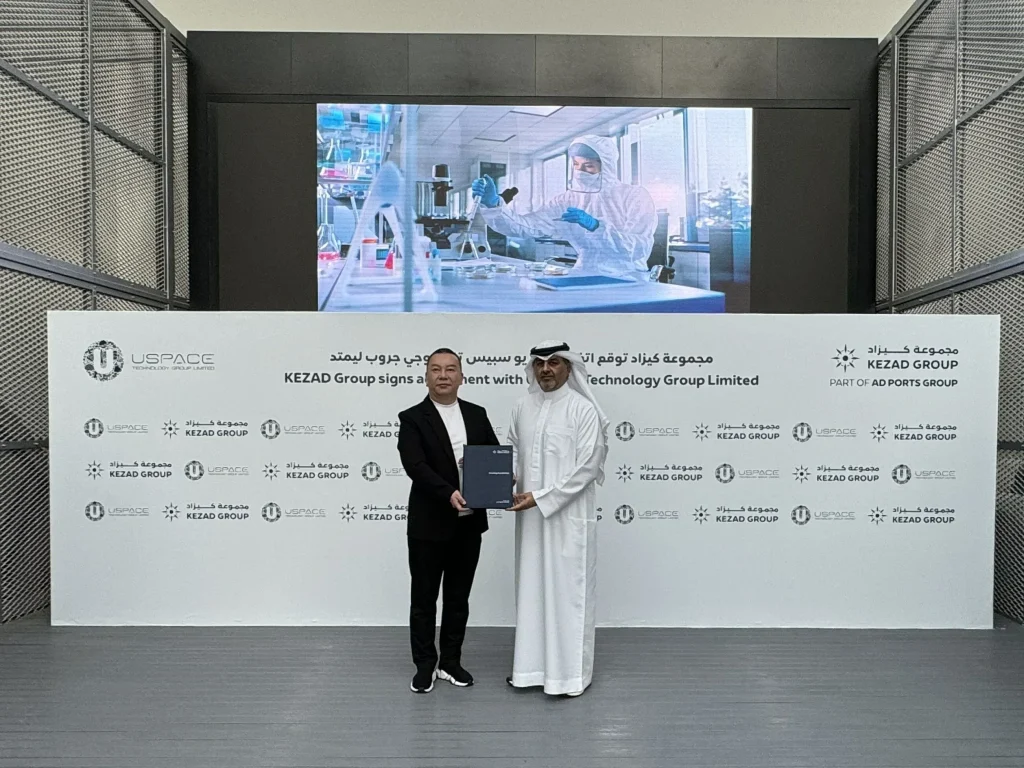
It seems that the UAE is not going to stop unleashing one massive and innovative megaproject after another anytime soon. Just this month, Abu Dhabi Ports Company PJSC announced the signing of a term sheet with USPACE Technology Group Limited (OTCPK:ASTGY). The agreement concerns the development of the Abu Dhabi Space Eco City, an international hub for aerospace enterprises worldwide. The goal is for these companies to settle in the UAE to ultimately develop a chain of international aerospace technology innovation and space trade centers.
The scope of the project is huge since AD Ports Group, the exclusive developer of ports and related infrastructure in Abu Dhabi, will allocate a land plot of over 3 million square meters to USPACE. For the UAE’s part, this investment in aerospace technology could pay dividends as the aerospace industry was valued at almost $1 trillion in 2023 and is only expected to grow.
As for AD Ports Group’s partner in this project, USPACE brings its expertise in satellite engineering and manufacturing – a $195 billion market in its own right – to Space City. The Hong-Kong based commercial aerospace enterprise could attract other companies to join the growing ecosystem there as well.
Although completely seperate from Space City, the Dubai Moon Resort, is another megaproject that clearly compliments this vision. Equipped with a research center, the Moon Resort could even attract more companies to participate in the future space hub.
As is, these developers plan to integrate over 1,000 commercial aerospace enterprises into the hub. But the initial phase of the project, which is expected to begin mid-2024, will cover just 1 million square meters.
The UAE’s Space Eco City has just been announced which means the timeline and total expected cost for this project are still unknown but estimates place the minimum cost at more than $10 to $20 billion.
Kuwait Silk City

Silk City, also known as Madinat Al-Harir, is a huge $130 billion multi-purpose city under construction in Kuwait. It was announced in September 2023 that due to new additions to the city, its development would begin in 2024 and continue until 2040. Once completed, Silk City will span over 250 km2 in Subiyah but due to its incredible size, it will have to be completed in several phases.
Part of the funding will come from the $900 billion Belt and Road Initiative which already built the $3 billion Jaber Causeway to connect the entire city. This causeway was completed in 2019 and is the first phase of the megaproject.
Its an important feature of the Silk City which will be divided into different areas catering to entertainment, the economy, and sports. Ultimately Silk City will feature a number of attractions such as an Olympic stadium, a new airport, and designated business areas to cater to the 700,00 people it will house across 135,000 residential units.
But the most prominent attraction in the city will no doubt be the Mubarak Al-Kabir tower. Stretching 1 kilometer into the air, the 234 floors will house up to 7,000 people and will surpass the Burj Khalifa’s world record once completed. Construction alone is estimated to take 25 years, but other parts of the city could be completed much sooner.
Overall, the city is expectd to contribute significantly to Kuwait’s urban development, on top of revitalizing its economy and offering an estimated 400,000 jobs. As spectacular as Silk City may be, it could face stiff competition from its counterparts in the UAE and Saudi Arabia. The number of ambitious projects introduced as part of NEOM may rival Silk City despite its grandness.
Moreover, questions may be raised as to whether this is the best investment decision Kuwait’s government could have made. After all, in 2018, protests broke out in opposition to Kuwait’s planned spending for Silk City while other areas have poor infrastructure that led to significant flooding in the winter. It seems that only the future will tell whether Silk City, impressive as it is, will turn out to be a good investment for Kuwait’s citizens and economy.
Jubail Industrial City
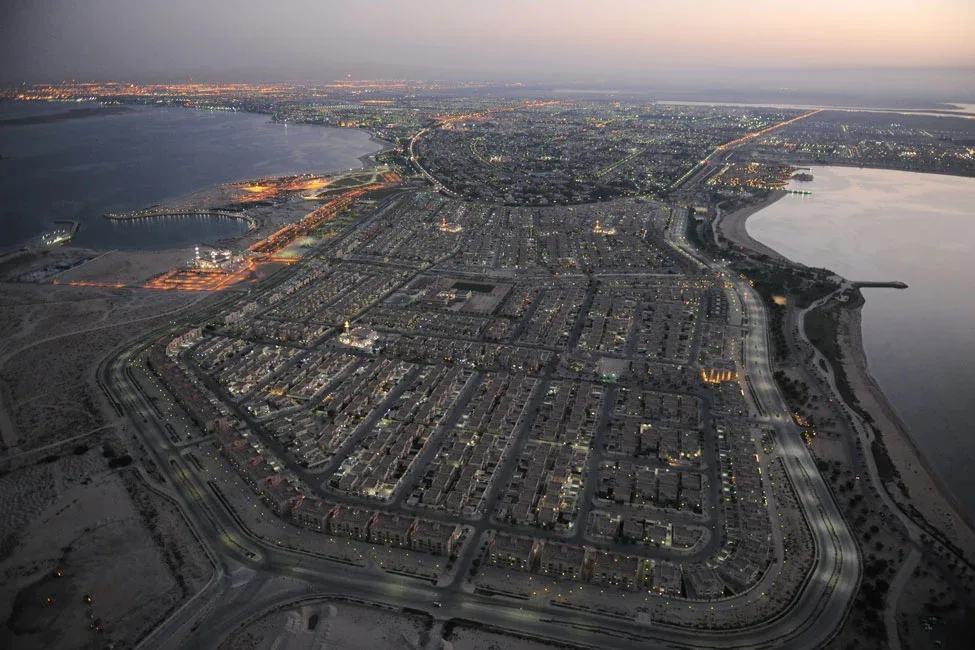
One of the world’s largest construction projects, Jubail Industrial City is a megaproject which has already been completed. Or has it?
Building on the city’s notable success, Saudi Arabia has plans to increase the size of the current industrial zone in Jubail. The total value of industries and investments currently active in the city likely exceeds $142 billion while private sector companies generate around $18 billion in profit each year.
Most of these companies are operating in the chemical industries which are the most active in Jubail. For example, the city contains the world’s largest chemical complex – Sadara – which has 26 integrated manufacturing plants producing over 3 million tons of product annually.
To put in perspective how successful the Jubail Industrial City has been its useful to know that Saudi Arabia is the world largest producer of ethylene glycol and methanol – most of which is produced in this city. Thanks in part to this project and its expansion, Saudi Arabia is expected to continue growing its 13.5% share of the market.
Saudi Arabia has plans to increase the size of the current industrial zone after announcing that it will build a third industrial zone, Jubail 3, and add it to the already full Jubail 1 and the almost-full Jubail 2.
Time is clearly of the essence when it comes to this expansion project since J2 is already 80% filled. Evidently, $2.9 billion worth of industrial projects in the private sector are already under construction, and an astounding $41 billion in other projects are being designed after receiving approvals.
Aside from creating a third industrial zone, Saudi Arabia plans to develop J2 even more. Part of the development plan for J2 is the Amiral project – a complex that will be integrated with the Saudi Aramco TotalEnergies Refining & Petrochemical Company’s refinery.
Saudi Aramco and TotalEnergies plan to invest $11 billion in the project and once completed the Amiral will help it convert the products it already produces into chemical products of a higher value.
Based on the pipeline of global industry leaders already willing to invest in and relocate to Jubail, it appears that the returns will more than compensate for the costs of this expansion. Since construction already began in early 2023, the project is expected to be completed by 2027 – adding to Saudi Arabia’s economic growth.
Bhutan’s Mindfulness City
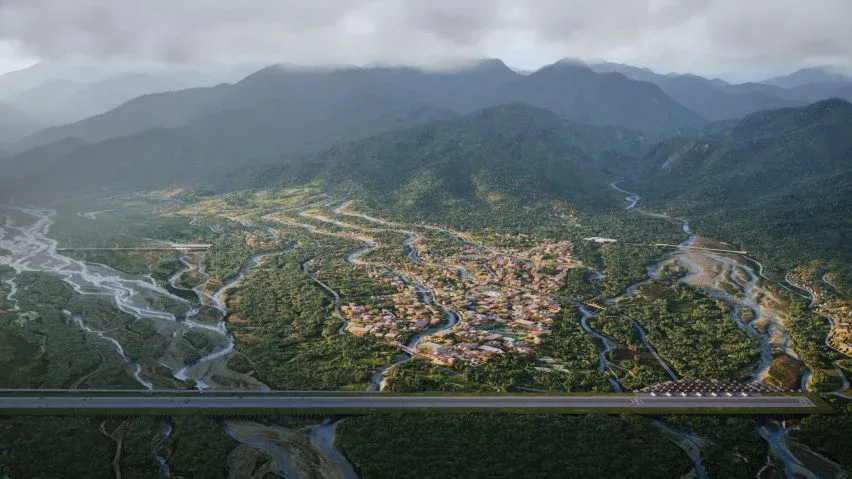
Mindfulness City is a 1000 km2 city meant to put the country of Bhutan on the map for international trade and revolutionize its tourism sector
Unlike the other cities on this list, Mindfulness City is unique since its very far from a futuristic city with cool, gigantic skyscrapers. Instead, it is a green city designed with the culture of Bhutan in and its rich biodiverse environment in mind.
Bjarke Ingels Group’s Landscape and Urban Design Team will be designing the city in collaboration with engineering group Arup and consulting firm Cistri. According to the masterplan currently available for the project, the city will be divided into 11 distinct neighborhoods, with each being centered around a public space, which is a natural division afforded by the current state of the site.
The neighborhoods will be connected via three ’inhabitable’ bridges that have a dual purpose: they do not only serve as the main mobility links, but they also host valuable destinations from an economic and cultural perspective. One of the most notable destinations is a new international airport, which will be Bhutan’s second airport. Another destination is a new cultural center that displays the key aspects of Bhutan’s monastic culture and its daily activities. The airport, combined with the culture center, should boost Bhutan’s revenue from tourism.
Given its rich cultural and environmental history, Bhutan has a lot of potential for making huge profits from tourism. Improving the tourism sector should be one of the country’s priorities. It now makes up an average of 5% of its GNP. The number of tourists has been steadily increasing. In 2019, it reached an all-time high of 316,000 tourists, a drastic 770% increase from the 2010 figure of 41,000, which more than doubled the annual revenue from tourism to $120 million.
It goes without saying, too, that this boost to tourism will create a great many new jobs for the people of Bhutan. And it’s worth noting that tourism jobs will not be the only ones available: we shouldn’t forget construction workers and workers with advanced skills who will be involved in the foreign investments by businesses and tech giants made possible by the project. Skilled Bhutanese workers may no longer need to travel abroad to find well-paying job opportunities.
Indeed, Bhutan already plans on running the city under different laws that will be more encouraging to foreign investors, making it a “Special Administrative Region”.
Further, in addition to the new international airport, a land connection from Gelephu to Assam and West Bengal has been proposed as an agreement with India’s government. It is reportedly predicted to connect Bhutan to more than four different neighboring countries eventually. It is clear that Bhutan aims to make the best use of its new city by establishing ties with as many partners as possible.
Since the project was announced only a few weeks ago, we don’t currently have publicly available information about the development phases or the expected cost. But it’s safe to assume, in any case, that a city spanning over 1000km2 that includes an international airport and is challenging to build given the location will cost no less than $10 to $20 billion.
Disclaimer
Please visit and read our disclaimer here.





